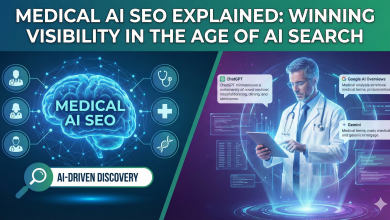
Chasing AI hype isn’t a winning strategy. Think of AI as your quarterback. It can read the field, make smart plays and change the game, but even Tom Brady looked mortal in Super Bowl XLII when the New York Giants’ defensive line overwhelmed his protection and sacked him five times, ending the Patriots’ perfect season. Championships are won by offensive and defensive lines that protect, block and execute under pressure, and are guided by strategic coaching. If AI is your QB, the trenches are your moat.
In the enterprise world, governance, data quality and responsible adoption play those same roles. Governance is the defensive line that holds back risk, bias and compliance threats to protect the lead. Data quality is the offensive line, clearing the path for execution and momentum. And responsible adoption is the coaching system and playbook, ensuring every player knows what the strategy is, when to use AI and how to use it safely and effectively.
AI may be the star that everyone talks about, but without those supporting players, it gets sacked before it can score. That’s exactly what’s happening across the field right now. The McKinsey 2025 State of AI report found that 71% of companies now use GenAI in at least one function, yet over 80% have not achieved meaningful profit of cost savings.
As we look ahead to 2026, how can enterprises govern and grow AI adoption to avoid becoming the next failed experiment? It comes down to those treating AI as iterative, governed and value-driven. Teams that build their lines before trusting the quarterback will get the W.
The Two-Minute Drill: Your 90-Day Plan:
- Week 1 to 2: Stand up an AI Lab with a council. Approve three tools. Publish green, yellow, red data rules. Name a product owner for each use case.
- Week 3 to 4: Pick two use cases that touch revenue, cost, or risk. Write a one-sentence success target with a number in it.
- Week 5 to 8: Build evals and guardrails first. Ship a thin slice to 25 users. Log every failure. Fix data first, prompts second, model third.
- Week 9 to 12: Scale only if the KPI trend beats the control for three straight weeks. If not, blow the whistle and retire it.
Governance: The Defensive Line That Protects the Lead
Every championship team needs a defense that can hold the line under pressure. In AI, governance is that defense. It’s the structure that protects against risk, bias and regulatory exposure while keeping the play within bounds.
Governance defines the rules of engagement, sets oversight and ensures every move aligns with business strategy. According to NTT Data, poor governance and weak data hygiene are the top reasons AI projects fail to deliver ROI. Rules of play:
- 10 yes-examples and 10 no-examples
- Approved tools and data zones
- Incident playbook and one-click rollback
- Once a month, try to break one AI use case on purpose. Log findings. Fix or retire.
- If a pilot misses its number twice, it goes to the bench for a rebuild or sunset.
The key to addressing this is to formalize through structured AI governance programs without suffocating. That starts with creating safe, sanctioned environments like AI labs and councils that bring together business, IT and compliance under one framework. They define approved tools, training standards and risk thresholds. Name owners not committees, for example the CIO owns tools and policy, COO owns process change, CFO owns benefits tracking, CISO owns data zones and audits and the product owner owns each use case end to end. If your model ships without an eval, you just kicked without a holder.
Without governance, even the best AI models are vulnerable to ethical lapses, regulatory penalties and operational chaos. A disciplined defensive line keeps the enterprise protected so AI can focus on scoring points instead of cleaning up turnovers. Quiet Mondays are a feature, not a fluke.
Data Quality: The Offensive Line That Creates Momentum
Even the greatest quarterback can’t win if the snap is bad. Every successful drive depends on a reliable offensive line that clears the way and keeps plays moving forward. In AI, data quality is that offensive line.
AI models learn from what they’re fed. Incomplete, biased or incorrect data leads to bad calls, inaccurate predictions, broken automation and damaged trust. Investing early in data governance, lineage tracking and quality validation pipelines ensures every dataset is reliable and defensible. So front-line data checks before any snap:
- Identity and lineage verified
- Freshness windows met
- Nulls under 5 percent on key fields
- Bias screens run on inputs and outputs
- Drift alerts wired to a dashboard
Prompts alone do not fix rotten data. They perfume it.
Data quality gives AI the clean, consistent foundation it needs to move quickly and confidently. When the data is strong, AI can read the field, make fast decisions and drive value across the enterprise. When it isn’t, even the most advanced models get sacked by confusion, inconsistency and mistrust.
Think of data quality as the front line of progress. It’s the line that makes execution possible and keeps the drive alive.
Responsible Adoption: The Coaching System that Leads to Victory
Responsible adoption is like a strategic coaching system that develops the playbook, builds trust and ensures everyone on the field knows the game plan.
Employees aren’t waiting for official approval to use AI. They’re adopting tools like ChatGPT, GitHub Copilot and built-in AI features from Microsoft and Google to speed up everyday tasks. Often this happens outside of sanctioned channels. This “shadow AI” boosts productivity but also exposes companies to data leaks, compliance violations and inconsistent results. You can’t simply ban it, you have to coach it. Invite teams to bring unsanctioned AI hacks. Legal and security keep score. The best ideas earn fast-track approval with guardrails. Three badges to keep the field clear; Viewer, Operator, Builder. Each tier maps to allowed tools and data zones, plus training. You do not ban shadow AI. You coach it and draft the best players.
Responsible adoption starts with transparency and training. Employees need to know how to use AI, but also when and why. The biggest barriers to AI adoption are human: distrust, job anxiety and change fatigue. Digital literacy programs, clear ethical guidelines and safe spaces to experiment, like AI labs or internal AI communities, help break these barriers.
This is where leadership can act as the coaching staff who define the rules of play with approved tools, data boundaries and usage scenarios. It’s about empowering employees to innovate while providing them with regular feedback, performance reviews and peer learning.
Predictive AI: Reading the Field
Once the fundamentals are strong, AI can move from reacting to predicting, like reading the defense before a snap. Predictive AI helps organizations forecast demand, anticipate machine failures and spot fraud before it happens.
Enterprises with mature AI capabilities report fewer disruptions and faster recovery times. They’ve evolved from “what broke?” to “what will break, and how do we prevent it?” With solid governance and clean data, predictive models give leadership the kind of true field vision every quarterback dreams of. Every ops review gets a “what will break next” page: three predictions, probability bands, and the pre-emptive fix.
A League Divided: Peak Adoption, Uneven Value
AI adoption has exploded, but not every team is winning. The Stanford HAI 2025 AI Index reports $109 billion in U.S. private AI investment in 2024, with 78% of organizations using AI in some form. Yet, Gartner’s 2025 Hype Cycle warns that GenAI projects are stalling before delivering on their projected ROI. Control the vendor sprawl. Keep one chat interface, one orchestration layer, one vector store, one metrics store. Anything extra is a special team with a sunset date. Turnovers hurt more than punts. Kill a flashy agent if it saves minutes but causes errors.
AI adoption may be at an all-time high, but value creation is still lagging. Most startups won’t make it past mid-season. But enterprises that invest in fundamentals will still be driving toward the end zone.
The AI Playbook for 2026
By 2026, the field of AI adoption and ROI will look very different. The era of experimentation is ending, and the scoreboard will show a clear divide between teams that chased AI hype and those that build strong, strategic systems. Scale is not turning it on for everyone. Scale is turning it off when it lies. Maturity looks like governed experimentation, data observability in every model, and AI literacy in every role.
Instead of focusing on the speed of AI deployment, the winning play is to build a foundation for sustainable performance.
By late 2026, expect to see a new benchmark of maturity emerge. This will take the form of enterprises with governed experimentation pipelines, data observability baked into every model and AI literacy embedded in every role. These companies will be running plays that compound in value over time. If a field fails, the play does not start.
AI will remain the quarterback, but the champions will be those who built the right team around it. In this league, the lines win the game.



